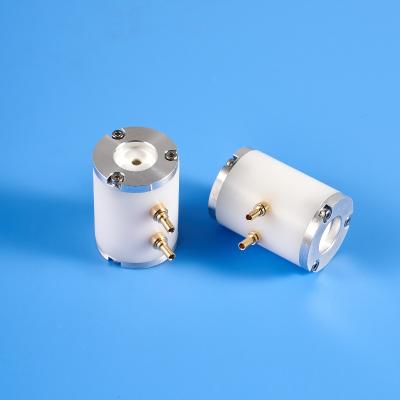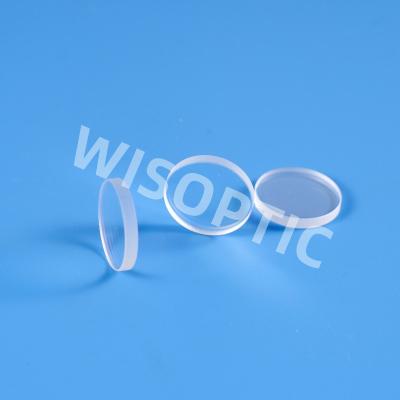Tracking and understanding laser damage events in optics - Part 08
2.2 Theoretical inversion cognition of precursor characteristics through damage morphology
The typical damage morphology of multilayer dielectric films with picosecond pulse in the fundamental frequency band is high-density and small-scale. In order to understand the destruction process, we designed a multi-layer dielectric film system with high fundamental frequency and high reflection, and used a 1064 nm 30 ps laser to conduct a destruction experiment. Figure 9 shows a typical damage morphology. Through cross-sectional analysis of the initial damage location, it was found that the damage occurred at the interface between the second layer (HfO2) and the third layer (SiO2). The damage process is manifested as a local thermal explosion from the precursor to form a cavity, and the external temperature conducts to cause thermal melting, and then the final micron-scale damage pit is formed by upward mechanical tension. Figure 9(c) presents the boundary conditions for thermodynamic failure. The position of the edge of the cavity can be considered as the thermal explosion temperature boundary, and the temperature of the outer circle to the melting edge is the melting point. In this way, the dynamic damage process of the precursor in the multilayer dielectric film can be reversed through the thermodynamic simulation of the damage process.
Figure 10 shows the temperature distribution of the film layer at different time slots under the irradiation of 30 ps single pulse laser. It can be seen that in the first 10 ps of pulse irradiation, the temperature at the center of the precursor has reached nearly 3000 K, but at this time the thermal explosion process has just begun, and the temperature rise is still limited to the vicinity of the precursor. When the pulse is applied for 10-25 ps, the temperature of the material near the precursor rises rapidly, and the temperature rise area begins to expand outward. In the last stage of the pulse action, that is, 25-30 ps, the temperature rise in the center tends to be gentle, slightly higher than 1×104 K, and at this time the temperature rise area rapidly expands outward, and the diameter of the area where the temperature reaches about 2800 K expands to about 400 nm, consistent with the size of the damaged cavity area, as shown in Figure 11(a). The diameter of the region with temperature reaching about 1900 K expands to about 550 nm in diameter, which coincides with the diameter of the molten region of the damage, as shown in Fig. 11(b).
In order to better illustrate the temperature changes at different locations of the damage point, the temperature changes over time in several key areas of the damage point can be extracted, as shown in Figure 12. The temperature of point A near the precursor rises rapidly under the action of the laser, and the temperature increases exponentially with time, and reaches the critical temperature of 2200 K when the pulse is irradiated for 7 ps, so a thermal explosion occurs in the early stage of the pulse. After the thermal explosion occurs, the absorption region of the material expands outward rapidly. From the temperature rise changes at the positions of B and C of the matrix material, it can be seen that it only takes a few picoseconds for the matrix material to rise from room temperature to over 2000 K. When the pulse irradiation ends, the absorption area extends exactly to the area corresponding to point C, which corresponds to the boundary of the thermal destruction in the damage point.
Through the detailed characterization of the damage morphology and the inversion numerical simulation of the thermodynamic process, we can obtain some basic characteristics of the nanoscale precursor, but its source and formation mechanism are still unclear. The direct characterization of nanoscale precursors and the study of the destruction dynamics process will be the key knowledge to break through the bottleneck of this type of laser destruction in the future.



